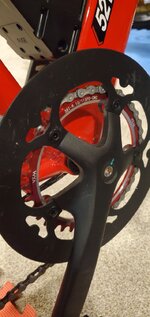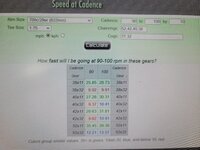tyyoda
New Member
- Region
- USA
Question for the group. I'm planning on reducing my front chain ring to something smaller than the stock 51T 130BCD ring to improve single track blue and black trail riding. Note: I also plan to swap the cassette to a 11-36T (would love to go to a 11x40T or 11x42T but not sure the LTWOO A5 derailleur can handle the 40/42T size (anyone know the max size as configured on the RCS?)
Tell me about your going to a smaller chainring swap experience?
Tell me about your going to a larger cassette (11x36T or larger)?
Some background data. With the current gearing (51 x 11) I have no trouble hitting 29 mph on flat ground and I don't feel like I'm "free wheeling" (per bikecalc my cadence is 70 rpm) In fact, I can go 40-41 down a big hill and still not feel like I'm freewheeling - cadence is almost 100 rpm. Per bikecalc, it feels like I could go to a 40T chainring (40 x 11) and still hit 29 mph with a 90 rpm cadence. I wouldn't be able to go 40 mph down the hill but 33-35 mph is still plenty fast
Gear calc tables
Gearing RPM mph
40x11 89.2 29
42x11 85 29
44x11 81.2 29
45x11 78.4 29
51x11 70 29
Tell me about your going to a smaller chainring swap experience?
Tell me about your going to a larger cassette (11x36T or larger)?
Some background data. With the current gearing (51 x 11) I have no trouble hitting 29 mph on flat ground and I don't feel like I'm "free wheeling" (per bikecalc my cadence is 70 rpm) In fact, I can go 40-41 down a big hill and still not feel like I'm freewheeling - cadence is almost 100 rpm. Per bikecalc, it feels like I could go to a 40T chainring (40 x 11) and still hit 29 mph with a 90 rpm cadence. I wouldn't be able to go 40 mph down the hill but 33-35 mph is still plenty fast
Gear calc tables
Gearing RPM mph
40x11 89.2 29
42x11 85 29
44x11 81.2 29
45x11 78.4 29
51x11 70 29


